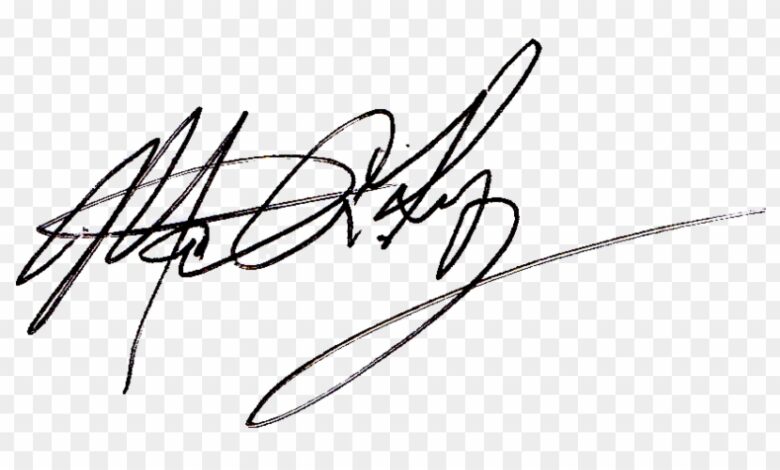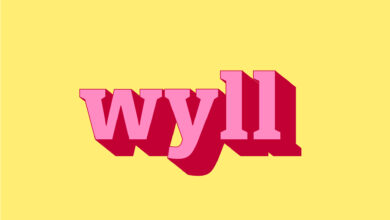Doctor Signature: Understanding Its Role, Meaning, and Importance

In the world of healthcare, few things carry as much weight as a doctor signature. Whether you’re filling a prescription, reviewing a medical report, or verifying an official form, the doctor’s signature is more than just a scribble—it’s a symbol of trust, responsibility, and professional authority.
But what does a doctor signature actually represent? Why is it so important? And how has its role changed over time, especially with digital records and electronic signatures? If you’ve ever squinted at a handwritten prescription or wondered how doctor’s notes get validated, you’re in the right place.
Let’s take a deep dive into everything you need to know about the doctor signature, and why it’s much more than just ink on paper.
What Is a Doctor Signature?
A doctor signature is the personal mark or name written by a licensed medical professional to authenticate a document, prescription, or diagnosis. It serves as official proof that a certified physician has approved the information or recommendation presented.
In many ways, it’s like a stamp of approval from someone trained and trusted to make life-impacting decisions.
Why Is a Doctor Signature Important?
You might be thinking, “It’s just a signature, right?” Well, not quite. A doctor signature is critically important for several reasons:
- Legal Validation: It proves that a licensed physician has reviewed and authorized the content.
- Medical Responsibility: It shows that the doctor accepts responsibility for the diagnosis or treatment.
- Patient Safety: Ensures that only qualified professionals approve medical actions.
- Insurance Approval: Needed for claims, procedures, and reimbursements.
Without a valid doctor signature, medical documents can be rejected, prescriptions denied, or treatments delayed.
Types of Documents That Require a Doctor Signature
A doctor signature shows up in many places across the healthcare system. Here are some key documents where it’s essential:
- Prescriptions
Ensures the medicine was recommended by a certified physician. - Medical Records
Confirms that the patient’s condition and treatment are accurately documented. - Referral Letters
Allows a patient to see a specialist or receive further tests. - Sick Leave Certificates
Confirms medical reasons for work or school absence. - Surgical Consent Forms
Indicates that the patient has been informed and the procedure approved. - Disability Evaluations
Validates a patient’s health status for social services or benefits.
These examples show just how vital a doctor signature is in keeping the wheels of healthcare turning.
The Legal Weight of a Doctor Signature
In many countries, including the U.S., UK, Canada, and Australia, a doctor signature carries legal weight. Here’s why:
- It binds the doctor to the contents of the document.
- If there’s a mistake or fraud, the signature can be used in court as evidence.
- It ensures accountability and protects patients from malpractice or forgery.
Some regions even have strict rules about how and when a doctor signature can be used—and penalties if it’s misused.
The Evolution of the Doctor Signature
Believe it or not, the doctor signature has evolved quite a bit over the years. Let’s explore how it’s changed:
| Time Period | Signature Type | Features |
| 1900s | Handwritten only | Ink pen, unique styles, often hard to read |
| 1980s–1990s | Rubber stamp used | Faster signing, but not very secure |
| Early 2000s | Digital scans or faxed | Slightly improved speed and clarity |
| Today | Electronic/Digital Signatures | Secure, time-stamped, legally accepted |
Nowadays, doctors use tablets or computer systems to sign medical records electronically. It’s faster, safer, and reduces errors. However, the handwritten doctor signature still hasn’t disappeared—it remains a familiar symbol in many clinics and hospitals.
How to Read a Doctor Signature (Or Try To!)
Let’s be honest—reading a doctor signature can feel like trying to decode ancient runes. Why is that?
- Doctors are often in a hurry.
- They write hundreds of notes daily.
- Their writing becomes more about speed than legibility.
That’s why pharmacies and hospitals rely on printed names alongside the signature. It helps everyone know who approved the document, even if the actual signature is… let’s say, “artistically unique.”
Doctor Signature in the Digital Age
Technology has brought big changes to healthcare, and that includes the way doctors sign documents.
Electronic Signatures (e-Signatures)
These are digital versions of handwritten signatures used to sign files electronically. They are:
- Legally binding in most countries
- Encrypted and secure
- Trackable with time and date stamps
Digital Signatures
A step above, digital signatures use secure algorithms and identity verification. Think of it as a high-tech signature that can’t be forged.
Doctors can now sign off on:
- Prescriptions
- Lab results
- Patient notes
- Referral letters
…all with just a few clicks. Pretty cool, right?
How Doctor Signatures Build Trust
A doctor signature isn’t just a name at the bottom of a form. It builds trust in the healthcare system. Here’s how:
- For Patients: It reassures them that their care is being handled by a real, qualified professional.
- For Other Doctors: It confirms a diagnosis or treatment plan.
- For Pharmacists: It lets them confidently fill prescriptions.
- For Insurers: It authorizes claims and medical justifications.
That little scribble does a lot more than we give it credit for.
Common Issues and Concerns With Doctor Signatures
Although it’s vital, the doctor signature system isn’t perfect. Here are some common concerns:
- Illegible Signatures
Can cause confusion or errors in treatment. - Forgery and Fraud
Fake signatures can lead to legal and health consequences. - Delayed Signatures
Waiting on a signature can hold up treatment or insurance claims. - Misplaced Documents
Signed forms can get lost if not handled securely.
Thankfully, digital systems are helping to reduce these risks with built-in security features.
Fun Facts About Doctor Signatures
Just for kicks, here are a few interesting tidbits:
- Some doctors develop a “signature stamp” to save time, though it’s not always allowed legally.
- In certain cases, a nurse practitioner or physician assistant can sign on behalf of a doctor—with permission.
- Some famous doctors have signatures that are displayed in museums, especially those who discovered important cures!
How to Verify a Doctor Signature
If you ever need to confirm whether a doctor signature is legit, here are some steps:
- Check the License Number: Most documents include a registration or license ID.
- Match the Name: Look for printed names under the signature.
- Contact the Clinic: A quick call can confirm if the document is genuine.
- Use Online Directories: Medical boards often have searchable databases.
It’s always better to double-check than take chances with your health.
Final Thoughts on Doctor Signature
In a world filled with codes, forms, and medical jargon, the doctor signature stands as a symbol of trust, knowledge, and care. Whether it’s scribbled on a prescription pad or digitally stamped on an electronic record, it shows that a real professional is standing behind your health journey.
From the earliest paper charts to today’s high-tech systems, this small but mighty mark continues to play a huge role in keeping healthcare honest, reliable, and safe.
So the next time you see a doctor signature—whether you can read it or not—know that it represents years of training, a mountain of responsibility, and a deep promise to protect and heal.





